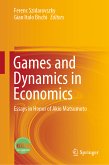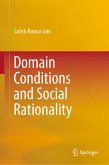This book critically discusses the historical backgrounds and new developments of the theories of games, decisions, and markets, with many possible applications to social and economic problems. Consisting of three connected parts, the book sheds new light on the role of merchants in the market economy under conditions of risk and uncertainty. Part I begins with the question of why and how John von Neumann and Oskar Morgenstern did joint work in game theory, namely, the theoretical study of strategic interactions among several decision makers. The duel between Sherlock Holmes and Professor Moriarty in Conan Doyle's famous detective story is recalled as a great inducement to Neumann and Morgenstern to invent zero-sum, two-person games. More general non-zero-sum games and associated Nash solutions are then discussed in relation to the generation-gap problem between a young couple and an elderly couple. Part II explores a set of very fundamental problems of individual decision making. The two famous axioms of revealed preference ¿ Samuelson's weak axiom and Houthakker's axiom ¿ are skillfully connected and empirically reevaluated by the introduction of certain regularity conditions. The revealed preference approach is then extended from the original commodity space to the dual price space. Such dual treatment in microeconomics is further applied to the theory of cost and production, with the decomposition of the total factor price effect into the substitution and scale effects. Part III turns the reader's attention to the interdependence of several markets. The almost forgotten Hicks-Morishima approach is newly revived with graphical illustrations of traded goods. The well-known Jones-Kemp approach to international trade is boldly expanded into the world of risk and uncertainty. Some striking results in comparative static analysis are derived, with favorable implications for the real world.
Dieser Download kann aus rechtlichen Gründen nur mit Rechnungsadresse in A, B, BG, CY, CZ, D, DK, EW, E, FIN, F, GR, HR, H, IRL, I, LT, L, LR, M, NL, PL, P, R, S, SLO, SK ausgeliefert werden.









